Star Trek: The Artistry of Dan Curry – VFX, Weapons and Wonders from TNG to Enterprise
By Dan Curry & Ben Robinson
Hardcover | $45.00
Published by Titan Books
Available Dec 01, 2020 | 204 Pages
For 18 years, Dan Curry helped create the look of Star Trek on television. Now Curry and co-author Ben Robinson have put together a beautiful new book that celebrates not only the legacy of a visual effects master but also the many collaborators whose combined work made true television magic.
Star Trek: The Artistry of Dan Curry, now available in hardback from Titan Books, serves as a loose overview of Curry’s life and Star Trek experience while also demonstrating the way the industry changed over his years with the franchise. Mostly, though, it’s a fascinating primer into the how – and who – of televised Star Trek visual effects from Star Trek: The Next Generation through to Star Trek: Enterprise.
Opening with a timeline of Curry’s life and career, the book quickly dives into his adventures in bringing the 24th century to life through revolutionary filming techniques, from state-of-the-art video compositing to creating forcefields with a cheerleader’s pom-pom.
“The script brought challenges like ‘This has to look like something we’ve never seen before.’ I thought that was brilliant because it gave us the opportunity to just make it up. Among my favorites were time-space continuum anomalies, or gaps into another dimension. ‘How are you going to do that?’ ‘Let’s try pouring some liquid nitrogen over black velvet and put a vacuum cleaner next to a light to suck the vapors into a light source, then we can composite it into a star field.’ ‘Cool!’ It was a lot of fun.”
Divided into sections like Models, Explosions, Matte Painting, and Martial Arts and Weapons, the book covers numerous examples and goes into a nicely balanced level of detail – enough to give the lay reader a real sense of exactly how an effect was created without getting into too much boring technical specifications. And, best of all, it’s packed with photos and illustrations, some of them specially created for the book.
Throughout the text, Curry is quick to name names, to give specific credit to the other artists who contributed to the overall effort. He’s effusive with praise even of outside vendors, such as Image G, whose facilities and crew were used for most of the motion control work done with spaceship models. “Despite the long hours, I always looked forward to working at Image G,” Curry writes, “not only because we were working with some of the coolest models in the world, but because we had the privilege of working with terrific people.”
The book also includes numerous testimonials – for lack of a better term – from both cast and crew members, from actors Kate Mulgrew and Michael Dorn to stunt coordinator Dennis Madalone and fellow VFX supervisor Ron B. Moore. These inserts help illustrate Curry’s approach to the work as well as illuminate his general nature.
This quote from Voyager actor/director Robert Duncan MacNeill serves as a good example. “He approached VFX as a real character, and as part of the storytelling rather than as a technical hurdle to overcome. I would listen to him describe ways of doing VFX that could enhance and seamlessly integrate into the emotional beats that the scene was dealing with. He’d talk about it from a story place and from a character place, and how the images could advance that point of view in a good way.”
That sense of detail, grounded in the needs of character and story, flow underneath all the descriptions, all the amazing work Curry and his fellow VFX artists did. I loved reading about the “kit-bashing” model work and the necessity of inventing a visual effect (involving milk, of all things) to simulate Sarek’s tears and the way Curry’s own travel photos informed alien landscapes. And I loved looking at the pictures. The color reproduction is terrific and the weight of the paper makes it all feel substantial and, well, fun to leaf through.
Since it covers 18 years worth of material, part of the book’s flow is the slow pivot to CGI, which, by the time of Enterprise, made physical models almost obsolete. And as useful as CGI could be – and Curry documents some wonderful design work accomplished that way – he also misses the older ways of working, when discovering how to do an effect was almost as important as the effect itself.
“CG technology has undeniable advantages,” he writes, “but I do miss playing with the coolest toys in the world. The artistry and craftmanship of physical modelmakers like Tony [Meininger] and Greg [Jein] earned a place in Star Trek history.”
At the end of his introduction, co-author Ben Robinson writes, “This book just scratches the surface of who Dan is, and I know it doesn’t do him justice.” Maybe that’s so, but I, for one, am sure glad we got to see at least this glimpse into the totality of Curry’s genius. And it will make me never think of pom-poms the same way again.
Available now
Star Trek: The Artistry of Dan Curry by Ben Robinson & Dan Curry, published by Titan Books was released on December 1st. The 204-page hardcover coffee table book can be ordered on Amazon for $44.98.
There is also a limited edition version of the book that includes a signed art card. You can pick this version up at Another Universe in the USA and Forbidden Planet in the UK.
Keep up with all the Star Trek merchandise news and reviews at TrekMovie.com.
All Star Trek images are © 2020 CBS Studios Inc. © 2020 Paramount Pictures Corp. STAR TREK and related marks and logos are trademarks of CBS Studios Inc. All Rights Reserved.
DISCLAIMER: We may link to products to buy on Amazon in our articles, these links are customized affiliate links that support TrekMovie by earning a small commission when you purchase through the links.


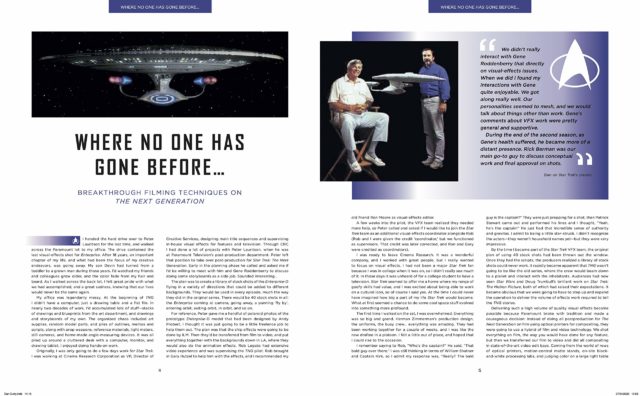
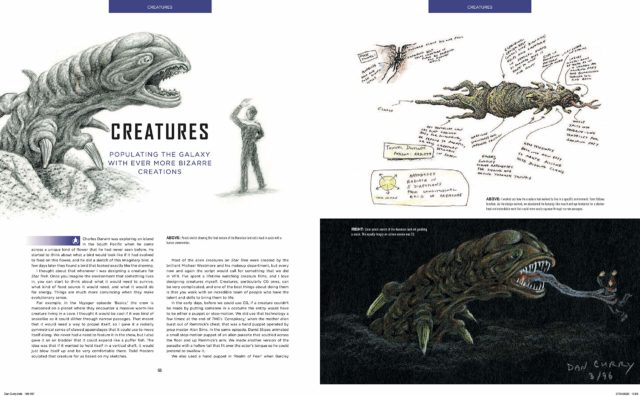
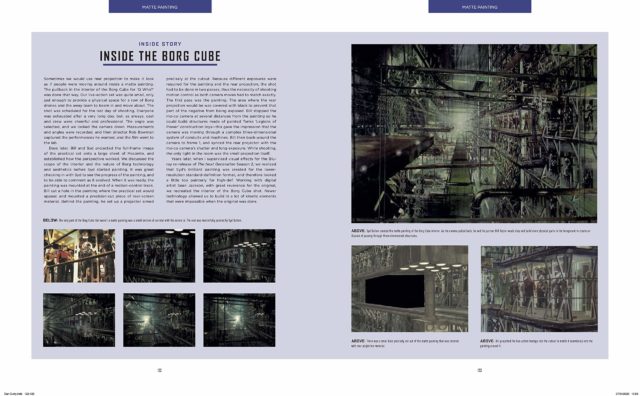



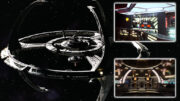
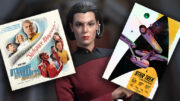
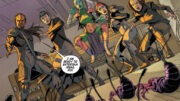
Dan Curry, Herman Zimmerman, Michael Westmore, Rick Sternbach, Rob Legato, Robert Blackman, Michael & Denise Okuda… all Trek legends in my book whose names I grew to know as a kid and whose brilliant inspired work defined an entire generation of Star Trek onscreen. So glad to see some of them getting their due and publishing books like this.
Frankly, much more so than publishing books I’d have had them define the next generation of canon visual design as well, especially on Picard where such continuity was much needed (with everything else turned upside down already), instead of the sophomore, visibly cash-strapped product we got instead. Badly fitting uniforms, copy & paste fleets… it’s all so embarrassing!
That would be nice, even just for visual continuity. A lot of them are retired, but certainly many VFX artists are still active, not just John Eaves.
I do know Picard was rushed. A friend did some VFX work on it and said it was utter chaos, with files going missing and impossible deadlines. But the style is too in keeping with the busy, contrasts and dirty aesthetic of Discovery for my taste.
But yes, during what was supposed to be a heartfelt goodbye scene for Data, all I kept staring at was the shoddy First Contact costume. ;)
You can tell the uniform wasn’t the same quality material they’d actually used in the TNG films and no one can spin rubbish about Picard being higher res and exposing imperfections, First Contact in HD still looks better than most movies today.
Yep! With a friggin yellow zipper happily dangling the whole time too.
Still waiting for a review of the new trio of volumes covering TMP, Phase II and the animated series.
Is mentioning the author of 6 Star Trek non-fiction books verboten on TrekMovie for some weird reason?
I doubt that it is, but it probably should be, given the level of non-scholarship that is still apparently the hallmark of that author’s work, along with his tendency to invent historical incidents to fill out his books.
Folks who are interested in getting the facts really ought to check out facttrek.com — those people are serious about getting it right. They recently really caught that author mentioned above on whole-cloth invention when it came to stuff in SPECTRE OF THE GUN, including him faking a story about a scene being shot and cut when in fact it never ever went before the cameras.
Ew… this is expensive.
Is this released in germany too?